
Water goes through several states and can appear in liquid, solid or gaseous form. These are the phenomena that make up the water cycle. Our country is full of truth and, with that, a lot of water too. The amount of water in lakes, seas and rivers is very large. In order for students to better understand the process that water goes through, we selected some activities about the water cycle.
Enjoy the tips!
The sun produces heat, which causes a process called evaporation to occur. In this phenomenon, the particles that make up the water are well apart, allowing it to be taken to the sky, in gaseous form. Then this water forms clouds.
Clouds, when they are well filled with water, turn into rain, that is, the water falls in a liquid state. Part A part is routed to rivers, lakes, dams and seas.
Hailstorms and blizzards happen when the water accumulated in the clouds becomes very cold and ends up in a solid state, that is, frozen. These phenomena usually happen in the coldest regions of Brazil or elsewhere. With the heat that appears afterwards, the ice melts and all the water returns to its normal state, that is, to a liquid state. Then the water evaporates.
“The UN (United Nations) predicts that, in the year 2025, approximately half of the population will face problems related to the lack of uncontaminated and/or polluted fresh water; if nothing is done until then”.

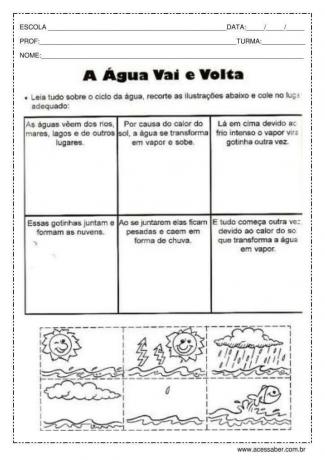

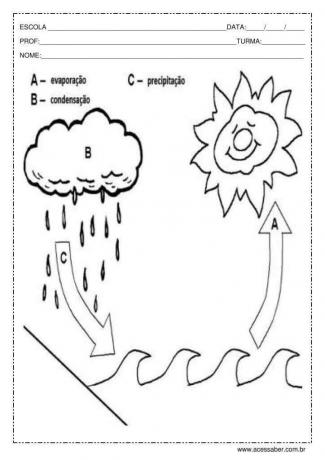

It is necessary to think very carefully about saving water. Nobody imagines living with little water. It would be the same as not having enough water to shower, quench your thirst, cook, wash dishes and much more.
Therefore, teachers need to keep students informed about the importance of saving water.
Did you like it? Share this post on your social network
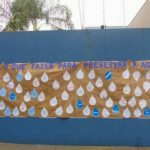 Theater Play about Water – Water Preservation
Theater Play about Water – Water Preservation
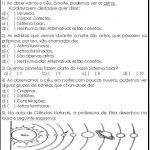 SCIENCE EVALUATIONS ON THE SOLAR SYSTEM
SCIENCE EVALUATIONS ON THE SOLAR SYSTEM
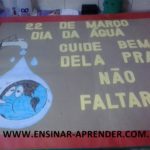 PANEL FOR WATER DAY WITH MOLD
PANEL FOR WATER DAY WITH MOLD
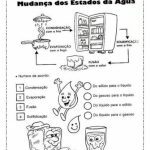 Science Activities: Physical States of Water
Science Activities: Physical States of Water
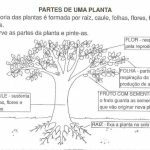 ACTIVITIES ON PARTS OF PLANS
ACTIVITIES ON PARTS OF PLANS
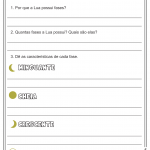 ACTIVITIES ON THE PHASES OF THE MOON
ACTIVITIES ON THE PHASES OF THE MOON
This site uses Akismet to reduce spam. Learn how your comment data is processed.

